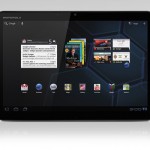The problem I am seeing most is just stuttering load times — for no reason the screen will just stop and you get the feared white line circling around the logo, the Masters online equivalent of the old Windows hourglass or the Mac spinning rainbow. And when the live coverage does come on there seems to be a long wait for the pixelation to go away. I have also seen on several occasions a Matrix-like instant repeat, a replay of the scene shown just seconds before. Once it got so bad (5-6 times in a row) I had to shut down the app and start over.
(Just for reference I have been watching mainly the Masters.com service online. Went to the CBSSports.com window a few times but saw some similar problems there. Also think the Masters.com design is a better feel.)
Before you tell me this is just my setup, rest assured I have done all the home-fix things I can, closing and clearing the browser cache, resetting the router and the cable modem, and the problems are persisting. And I am on a Comcast Internet connection that just tested out at 35 Mbps download so it ain’t the ISP. We’ve asked the folks at IBM if they are having any problems but my guess is that we’re not going to hear anything from them so if you are having similar issues let us know in the comments below.
I also tested out the Android app, which is new this year, during a trip to the doctor’s office yesterday. While I was generally pleased with the service (I mean it’s pretty damn amazing to be sitting there watching live golf on your phone, right?) I did notice that the app kept telling me (every few minutes) that the “this video not optimized for mobile.” Exsqueeze me? If it’s not optimized for mobile what’s it doing on my phone?
So… watching Tiger trying to get back into the tourney it looks like he is playing solidly but not amazing anyone. I’d have to give a similar grade to the online coverage this year, though with a note that the Masters online is by far the most ambitious digital coverage of any major sporting event, hands down. Like the Masters, this stuff ain’t easy.









